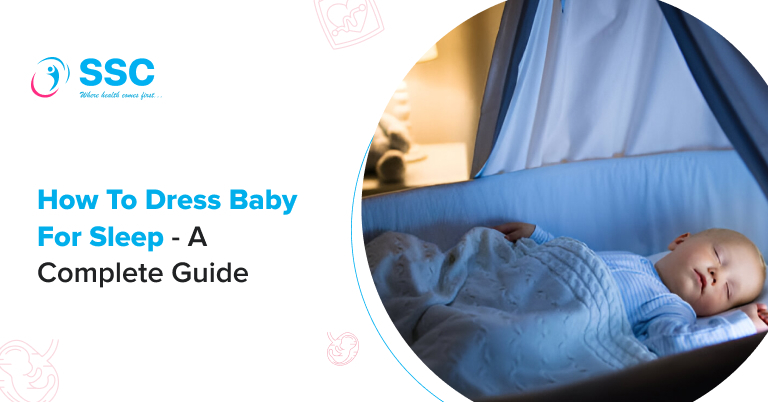When Do Babies Start Crawling?
Key Facts
- Most babies start crawling between 7 to 10 months, though some may begin as early as 6 months or a little later depending on their development pace.
- Every baby develops differently, so it's completely normal if a baby takes more time than others to begin crawling.
- Some babies may skip crawling altogether and move straight from sitting to standing or walking without following the traditional crawling stage.
- Before crawling, babies often push up on their arms, rock back and forth on hands and knees, or move in circles as early signs of readiness.
- A wide variety of crawling timelines and movement styles is considered normal as long as the baby is showing steady progress in physical development.
Crawling is an important stage that shows a baby is beginning to move on their own.
Babies usually start crawling between 7 and 10 months, but some may do it earlier or later — and some might not crawl at all. Instead, they may scoot on their bottom, slide on their tummy, or go straight from sitting to standing.
It’s normal for parents to worry if their child reaches developmental stages later than others and to compare their progress to others’. Even though the majority of kids grow in a similar way, each child’s timing may differ.
When Do Babies Start Crawling?
Most newborns begin crawling between the ages of 7 and 10 months, however, this can vary. While some babies may start as early as 6 months, others might not start until 12 months or more. A baby’s level of readiness to crawl is determined by several characteristics, including muscle strength, coordination, and the amount of time spent practicing movements on the floor.
If a baby doesn’t start crawling right away, there’s usually no need to worry. Some babies may take more time to build the strength and confidence needed to move on their own.
Do All Babies Crawl?
Not all babies follow the same crawling pattern. Some babies might skip crawling and go straight to standing, holding onto furniture to move around, or even walking.
Others might develop unique ways of getting around, such as:
- Scooting on their bottom instead of using hands and knees
- Rolling to get where they want to go
- Pulling forward on their belly, using their arms for support
- Skipping crawling altogether and jumping straight to standing or walking

Types of Crawling
Before walking, babies develop various ways to move, each with a unique style. Experts say it’s all about going from one point to another.
These are some common crawling types:
- Classic Crawl: Babies begin crawling by moving their hands and knees, using one hand and the opposite knee at the same time while keeping their bellies off the floor.
- Bottom Scoot: Babies sit and push forward with hands instead of crawling.
- Rolling: They start to move by rolling from one place to another.
- Commando Crawl: The baby moves forward by pulling with their arms while staying on their belly.
- Crab Crawl: Babies move forward with hands while keeping knees bent, like a crab.
- Bear Crawl: Baby crawls with straight legs instead of bent knees.
Signs Your Baby is Getting Ready to Crawl
Rolling Over – Babies begin by rolling from their stomach to their back and vice versa, building strength and coordination.
Bear Crawl Position – Some babies push up on their hands and feet, keeping their knees off the ground like a little bear.
Transitioning Between Sitting and Crawling – Babies start shifting between a crawling stance and a sitting position, improving balance and mobility.
Tummy Sliding – Some babies drag themselves forward using their arms while lying on their tummies, moving without traditional crawling.
Partial Crawling Attempt – Babies may get close to a crawling position but keep one leg bent correctly while the other sticks out straight.
Rocking on Hands and Knees – Some babies manage to get into a crawling stance but remain unsure how to move forward, often rocking back and forth.
Crawling Stages
Tummy Time
Tummy time is when a baby lies on their stomach while awake and supervised. It helps strengthen their neck, shoulders, and arms, preparing them for crawling.
At first, they may only tolerate it for a few minutes, but with practice, they’ll start lifting their head and pushing up with their arms.

Turning Around on Their Belly
As babies gain better muscle control, they start rotating in circles while lying on their stomachs. This is often their first way of exploring movement.
Pushing Up
Some babies push up onto their hands and toes, like doing a little plank. Others go onto their hands and knees. Both ways help them get ready to crawl.
Sliding on the Belly
Before crawling, some babies slide forward on their bellies, using their arms and legs to push. Some might even “hop” forward a little.
Rocking on Hands and Knees
Once babies can balance on all fours, they may start rocking back and forth. This helps them learn to move forward.
Sitting Up from the Belly
Some babies learn to sit up from their tummy before crawling. Others go straight to crawling without sitting first.
Moving Backward First
Many babies start by pushing themselves backward before they figure out how to go forward. This happens because their arms are stronger than their legs at first.
How to Help Your Baby Crawl
Parents can encourage crawling by creating a supportive and engaging environment. Here are a few ways to help:
- Tummy Time: Giving babies plenty of supervised tummy time helps strengthen their muscles and improve coordination.
- Toy Motivation: Placing a favorite toy slightly out of reach encourages babies to stretch and move toward it.
- Safe Space: Providing a baby-proofed area with enough space for movement allows babies to explore freely.
- Lead by Example: Your baby could be encouraged to try crawling if you get down on the floor and demonstrate it for them.

When to Talk to a Doctor
Every baby develops at their own pace, but if you notice any of the following, it’s a good idea to check in with your pediatrician:
- Your baby isn’t trying to move by 12 months
- They seem too stiff or too floppy when attempting movement.
- They struggle to bear weight on their arms or legs.
- They show no interest in moving at all.
Some babies take longer to crawl than others, but consulting a doctor can help rule out developmental issues and offer advice if necessary.
Bottom Line:
Every baby crawls in their way, and there’s no right or wrong method. As long as they are moving and exploring, they are building important motor skills.
Crawling helps babies become more independent, but each baby learns at their own pace. By knowing the different ways babies move and giving gentle support, parents can help them grow with confidence.
Frequently Asked Questions
When do babies start crawling?
Most babies start crawling between 6 and 10 months of age. Some may scoot, roll, or crawl backward before moving forward. Every baby develops at their own pace, so slight delays can be normal.
What age do babies crawl?
Babies usually crawl around 7 to 9 months old, though some may begin a little earlier or later. The timing can depend on their muscle strength and time spent on the floor. Encouraging tummy time can help babies build the strength they need.
Is crawling at 4 months early?
Yes, crawling at 4 months is considered early but not impossible. Some babies may show advanced motor skills and begin moving earlier than others. If your baby is crawling this early, it usually just means they're ahead in development.
What are the first signs of crawling?
The first signs of crawling include rocking back and forth on hands and knees, pushing up during tummy time, and reaching forward. Babies may also start scooting or army crawling. These small movements show they’re getting ready to crawl.
Do babies sit or crawl first?
Babies usually learn to sit before they start crawling. Sitting helps strengthen their back and core muscles, which prepares them for crawling movements. Most babies begin sitting steadily around 6 months and then progress to crawling.
When does a baby start walking?
Most babies start walking between 12 and 15 months, though some may begin as early as 10 months. Before walking, they usually pull up to stand and take a few steps while holding onto furniture. Walking may take time and happens when the baby feels confident.









